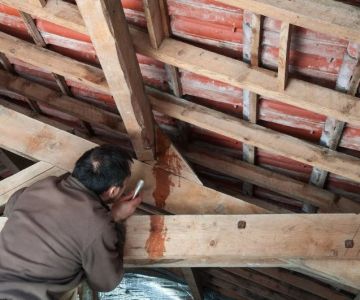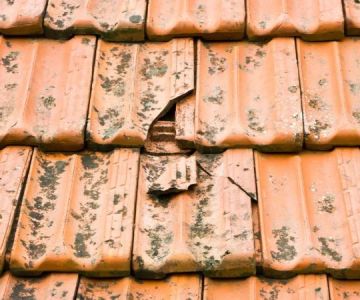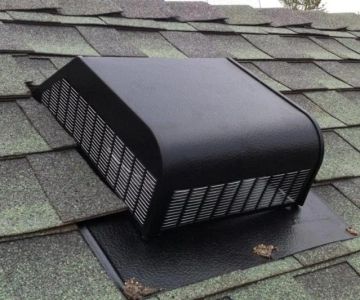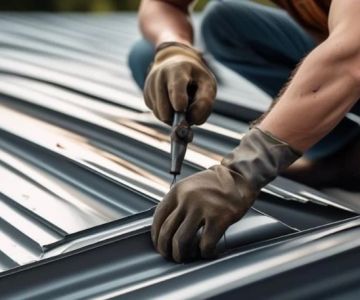
- 1. Understanding the Risks of Improper Roof Material Storage
- 2. Common Mistakes When Storing Materials on the Roof
- 3. How to Safely Store Materials on the Roof
- 4. Protecting Your Roof from Potential Damage
- 5. Case Studies: Real-Life Incidents of Roof Damage from Improper Storage
1. Understanding the Risks of Improper Roof Material Storage
Storing materials on the roof might seem like a convenient option, especially during home construction or roofing projects. However, improper storage can cause significant damage to your roof. Roofs are not designed to bear excessive weight, and storing heavy materials without the proper precautions can lead to structural issues, leaks, and more.
Materials such as shingles, tiles, or tools can create pressure points on your roof, causing dents, cracks, or even breaks in the surface. Additionally, prolonged exposure to moisture or sharp objects can compromise the roofing material, leading to costly repairs or replacement.
2. Common Mistakes When Storing Materials on the Roof
Many homeowners and contractors make the mistake of not considering the long-term effects of storing materials improperly on their roofs. Here are a few common mistakes:
- Placing Too Much Weight: Overloading the roof with materials like heavy bundles of shingles or construction tools can cause significant strain, leading to potential damage or even collapse in extreme cases.
- Storing Materials on Sloped Roofs: A sloped roof is not designed for material storage. Items can slide off, risking damage to the roofing system or injury.
- Failure to Use Protective Barriers: Storing materials without proper protective barriers such as tarps or padding can cause direct damage to the roof surface, especially if sharp edges or heavy items are involved.
- Ignoring Weather Conditions: Failing to consider weather conditions, such as high winds or rain, can exacerbate roof damage. Wet materials left on the roof can cause moisture damage, while gusts of wind can blow materials off, causing accidents.
3. How to Safely Store Materials on the Roof
To avoid the risks mentioned, here are some steps to safely store materials on your roof:
- Use a Roof Rack or Scaffold: Roof racks or scaffolding are designed to bear weight safely. These structures distribute the weight evenly across the roof, preventing strain on specific areas.
- Keep Materials Secure: Ensure that materials are tightly secured to avoid sliding off, especially on sloped roofs. Use ropes, netting, or straps to keep everything in place.
- Protect the Roof Surface: Lay down protective sheeting or tarps to prevent direct contact between the materials and the roof. This is especially important for sharp or heavy materials.
- Distribute the Weight Evenly: If you must store materials directly on the roof, ensure they are distributed evenly across the surface. This will reduce the risk of concentrated pressure points and structural damage.
- Plan for Weather Conditions: Always consider the weather. Avoid storing materials on the roof during heavy rain or high winds, and secure items that could be blown away.
4. Protecting Your Roof from Potential Damage
The best way to protect your roof is by preventing damage in the first place. In addition to the precautions mentioned, regular inspections are crucial. Here are some steps to keep your roof in good condition:
- Inspect Your Roof Regularly: Even if you haven’t stored materials on your roof, it’s important to check for signs of wear and tear. Look for cracks, leaks, or damage that might have occurred from improper storage in the past.
- Address Issues Immediately: If you notice any damage or weak points in your roof, have them addressed immediately by a professional roofer. Early intervention can prevent more severe problems down the line.
- Use Professional Help for Storage: When in doubt, consult with a roofing professional before storing materials on the roof. They can recommend the best practices and safety measures to avoid damage.
5. Case Studies: Real-Life Incidents of Roof Damage from Improper Storage
Many homeowners and contractors have learned the hard way about the dangers of improper roof material storage. Here are a few real-life incidents:
- Case 1: Roof Collapse Due to Overloading – A contractor stored several heavy bundles of roofing tiles on a residential roof, which led to localized structural failure and a collapse in part of the roof.
- Case 2: Water Damage from Improper Material Storage – A homeowner stored wet roofing materials on the roof, causing water to seep into the attic and create a mold issue. The cost of repair was significantly higher than the original roofing project.
- Case 3: Slippery Materials on a Sloped Roof – During a renovation, a contractor left materials unsecured on a sloped roof, resulting in shingles sliding off and causing damage to landscaping and fences below.
These case studies demonstrate the importance of proper storage and the potential consequences of neglecting roof care during material handling. Always consider safety and structural integrity when storing materials on your roof.








 L&S Roofers0.0 (0 reviews)
L&S Roofers0.0 (0 reviews) New Path Roofing5.0 (47 reviews)
New Path Roofing5.0 (47 reviews) Safeguard Roofing5.0 (551 reviews)
Safeguard Roofing5.0 (551 reviews) All Roofing Contractors5.0 (5 reviews)
All Roofing Contractors5.0 (5 reviews) NJ Roofing Specialists0.0 (0 reviews)
NJ Roofing Specialists0.0 (0 reviews) Martin & Sons Roof Repair4.0 (27 reviews)
Martin & Sons Roof Repair4.0 (27 reviews) What is a Roofing Square? How to Convert Measurements for Your Project
What is a Roofing Square? How to Convert Measurements for Your Project How to Install a Roof Cricket Behind a Rooftop Stairwell Enclosure
How to Install a Roof Cricket Behind a Rooftop Stairwell Enclosure The Average Cost of a Roof Warranty Transfer When Selling a Home
The Average Cost of a Roof Warranty Transfer When Selling a Home What is a Roofing Material Sustainability Certification? (e.g., LEED, Cool Roof)
What is a Roofing Material Sustainability Certification? (e.g., LEED, Cool Roof) Roof Snow Load Calculation: How to Know if Your Roof is at Risk
Roof Snow Load Calculation: How to Know if Your Roof is at Risk Common Roofing Scams and How to Avoid Them: High-Pressure Sales and Free Inspections
Common Roofing Scams and How to Avoid Them: High-Pressure Sales and Free Inspections